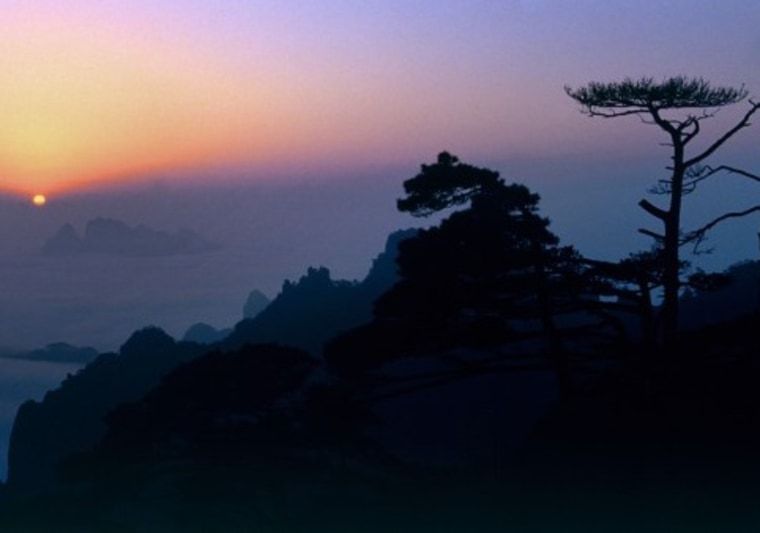Native Australian David Sheppard summons the oft-quoted backpacker's mantra, "take only photographs, leave only footprints," as he reflects on the fragility — and relatively newfound fame — of the natural wonders added in recent years to the UNESCO World Heritage List. "Natural World Heritage sites represent the best of what nature has to offer," says Sheppard, Head of the Protected Areas Program for the International Union for Conservation of Nature (IUCN), the organization which recommended the sites.
Chosen by a committee of the United Nations' Educational, Scientific, and Cultural Organization (UNESCO), World Heritage sites denote natural and cultural areas recognized for their universal value to humanity. The selection process involves extensive field work by conservation experts who have, in most cases, dedicated their lives to studying the natural world. Therefore, says Sheppard, "It is important to travel in a respectful and low impact manner. We would like tourists to tread lightly when visiting these important natural phenomena."
Though it is popular with local Chinese, Mount Sanqingshan National Park in the Jiangxi Province of Eastern China is currently virtually unknown to foreigners. But the park boasts suspended walking trails from which hikers can gaze upon the incredibly unique formations of granite rock and highly diverse tree populations in its forest, thereby preventing a high impact from foot traffic and keeping travelers in safe, designated areas.
Michael Brombacher, Project Coordinator for the Association for the Conservation of Biodiversity in Kazakhstan, says, "The nomination of Saryarka was meant to protect the site. Nobody in the country thought of tourism [as an outcome]." In northern Kazakhstan, Saryarka comprises over 500,000 acres of wetlands which as many as 16 million threatened birds use as a resting point in their migration cycle. The open savannah and lakes here offer a protected nursery for thousands of waterfowl which nest here en route from Africa, Europe and southern Asia to Siberia. The endangered saiga antelope also lives in Saryarka.
Regardless of the nomination's intent, tourism will certainly come and when it does, the IUCN will be actively monitoring it. Keeping watch over future numbers at the UNESCO sites is part of IUCN's role, notes Sheppard, who says revealing the sites responsibly to inquisitive, educated travelers is one of the best ways to preserve them. Ultimately, he says, the relationship between the UNESCO natural wonders and those who visit them is a symbiotic one. "We ask that people do their homework before visiting," says Sheppard. "This way, they can truly appreciate the beauty of these eight wonders."
Speaking of beauty, the Lagoons of New Caledonia could easily figure in the final scene of a James Bond movie. Imagine 007 luxuriating in the arms of an exotic diva with the turquoise waters and powdery sands of the lagoons in the background. First impressions aside, it is the highly diverse coral reef ecosystems of these lagoons — an overseas territory of France located in the Pacific Ocean east of Australia — that helped them achieve the recognition and protection of UNESCO status. Some scientists believe that the coral reefs and fish life here actually surpass numbers found in the much larger Great Barrier Reef in Australia.
The island of Surtsey was formed by volcanic eruptions in the 1960s and is part of a cluster of islands known as the Westmen Isles, scattered off the southern coast of Iceland. Surtsey is cherished by scientists who are fascinated by the colonization patterns of new varieties of plants and animals that have settled there. While the entire island is a preserve and no human contact with any part of it is allowed, people can see Surtsey from neighboring isles.
Perhaps the most remote of the eight new wonders is Socotra Archipelago in Yemen, known to some as the "Galapagos of the Indian Ocean." Currently, 75 percent of the region in and around Socotra is part of a natural sanctuary on account of the diverse species that have made the area home. Ninety percent of the reptiles in Socotra can be found nowhere else in the world, while about 40 percent of its plant species are unique to the region. Yemeni ecotourism outfits as well as environmental organizations have been organizing sustainable tourism in Socotra for the past few years. Its inclusion on UNESCO's list brings with it a higher profile, but its remote location all but guarantees that it will remain pristine for a long time to come.
